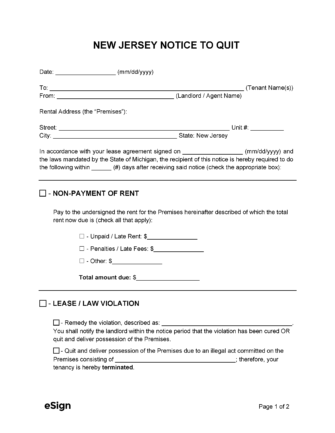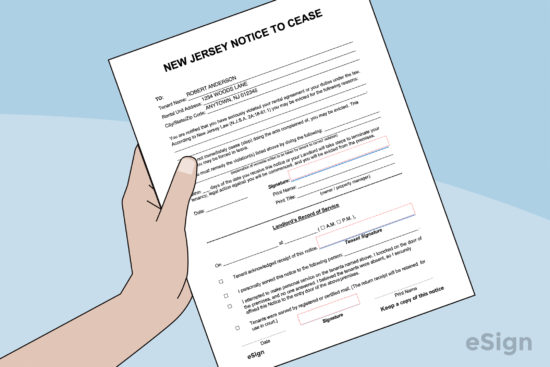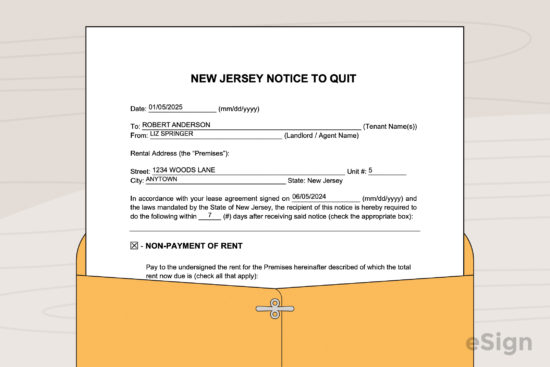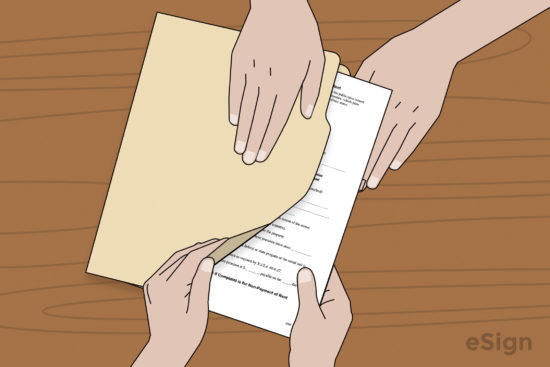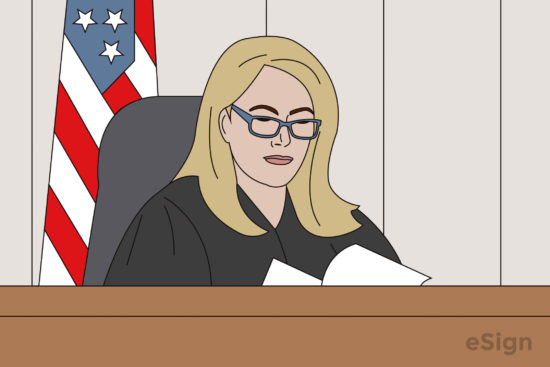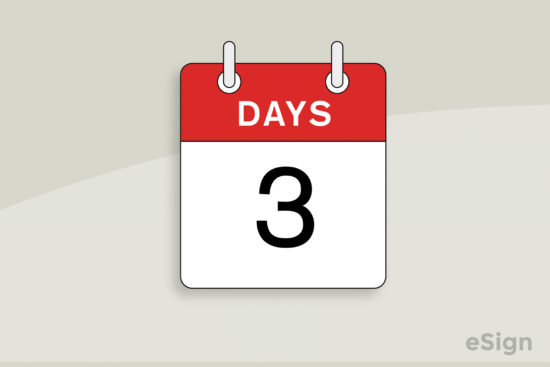Eviction Notices: By Type (8)
Immediate Notice to Quit | Non-Payment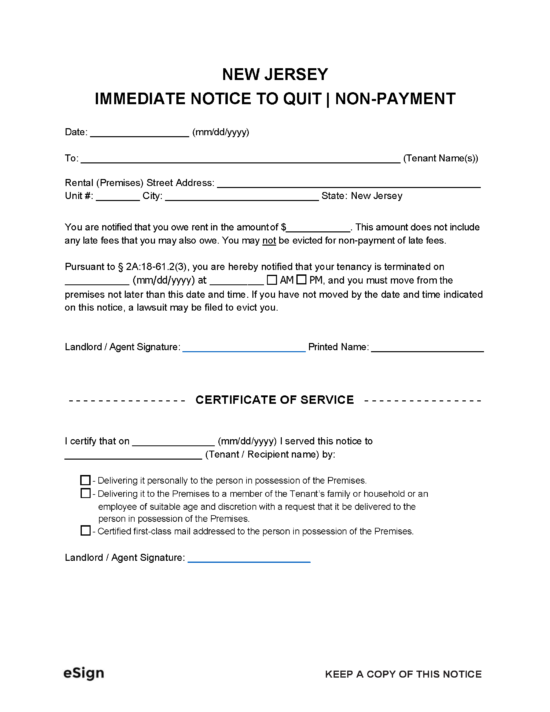 – An optional notice that orders a tenant to move out for non-payment of rent or face an eviction lawsuit. – An optional notice that orders a tenant to move out for non-payment of rent or face an eviction lawsuit.
Download: PDF, Word (.docx), OpenDocument |
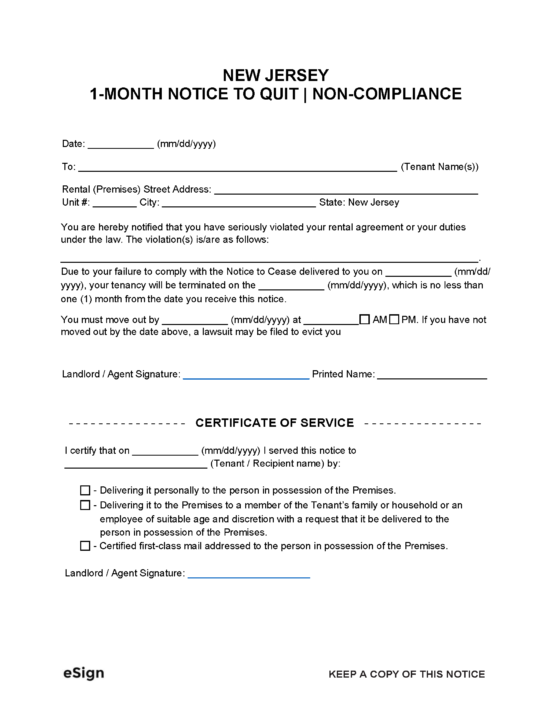 1-Month Notice to Quit | Non-Compliance – Terminates a tenant’s lease with one month’s notice for lease non-compliance or habitually late rent. 1-Month Notice to Quit | Non-Compliance – Terminates a tenant’s lease with one month’s notice for lease non-compliance or habitually late rent.
Download: PDF, Word (.docx), OpenDocument |
3-Day Notice to Quit | Disorderly Conduct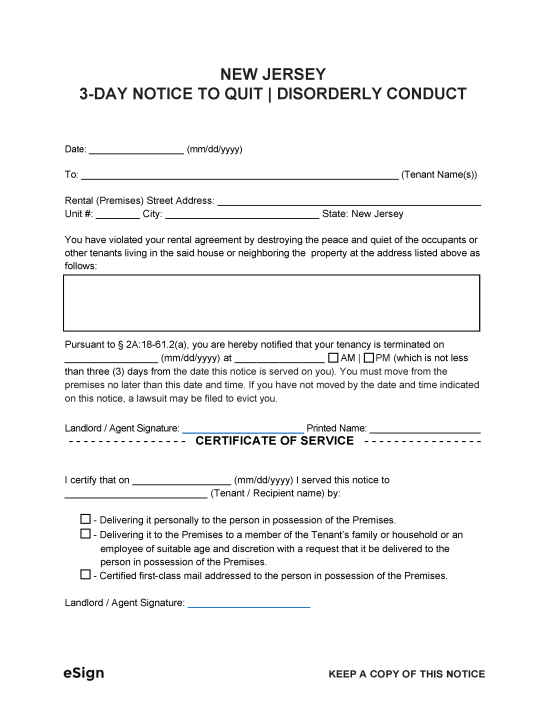 – For lease violations that disturb the peace of the tenant’s neighbors. – For lease violations that disturb the peace of the tenant’s neighbors.
Download: PDF, Word (.docx), OpenDocument |
3-Day Notice to Quit | Property Damage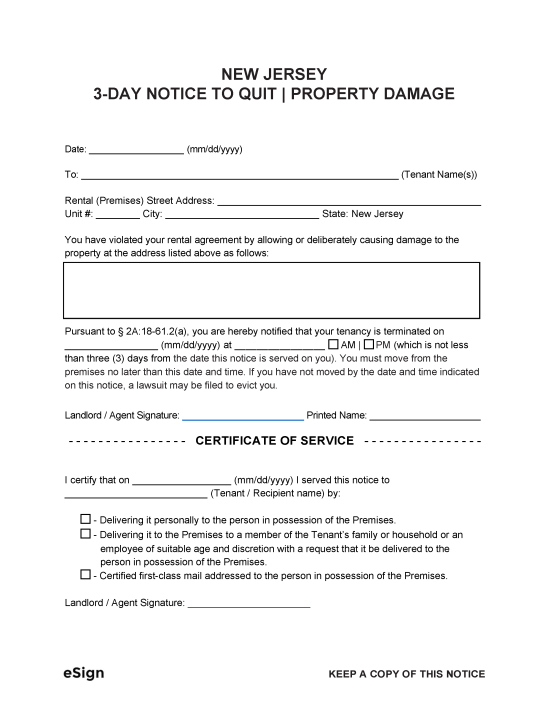 – Gives a tenant three days’ notice to quit the premises for damaging the landlord’s property. – Gives a tenant three days’ notice to quit the premises for damaging the landlord’s property.
Download: PDF, Word (.docx), OpenDocument |
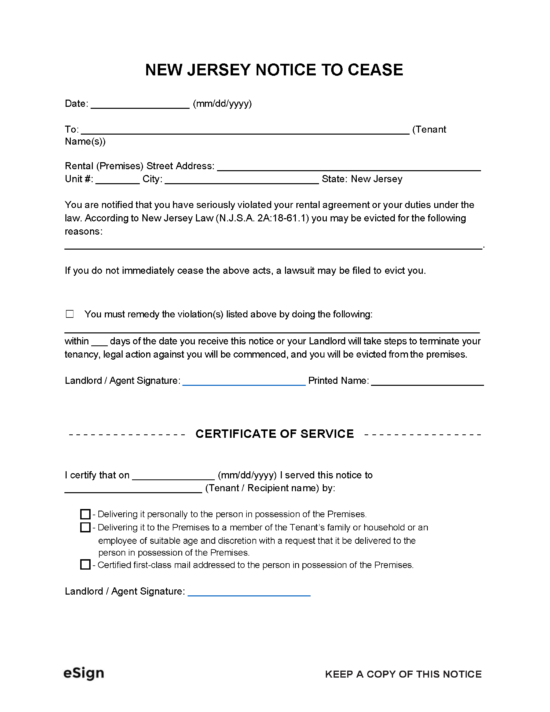 Notice to Cease – Informs a tenant that they have broken the terms of their lease and orders them to stop or remedy the violation to stay on the property. Notice to Cease – Informs a tenant that they have broken the terms of their lease and orders them to stop or remedy the violation to stay on the property.
Download: PDF, Word (.docx), OpenDocument |
Lease Termination Letter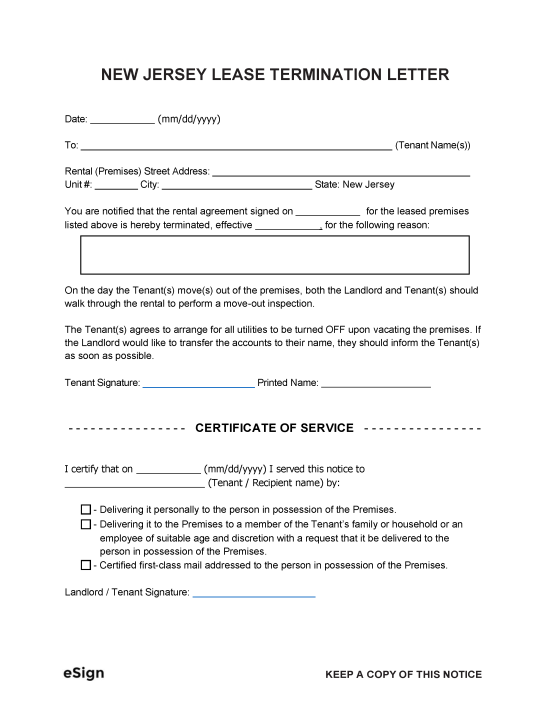 – Terminates a tenant’s lease with legal grounds for eviction. – Terminates a tenant’s lease with legal grounds for eviction.
Download: PDF, Word (.docx), OpenDocument |
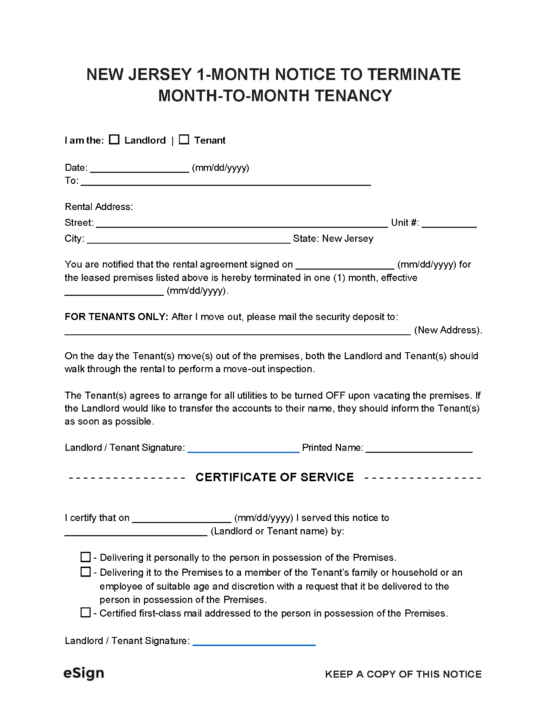 1-Month Notice to Terminate | Month-to-Month Tenancy – Used by tenants to terminate a month-to-month rental agreement with one month’s notice. 1-Month Notice to Terminate | Month-to-Month Tenancy – Used by tenants to terminate a month-to-month rental agreement with one month’s notice.
Download: PDF, Word (.docx), OpenDocument |
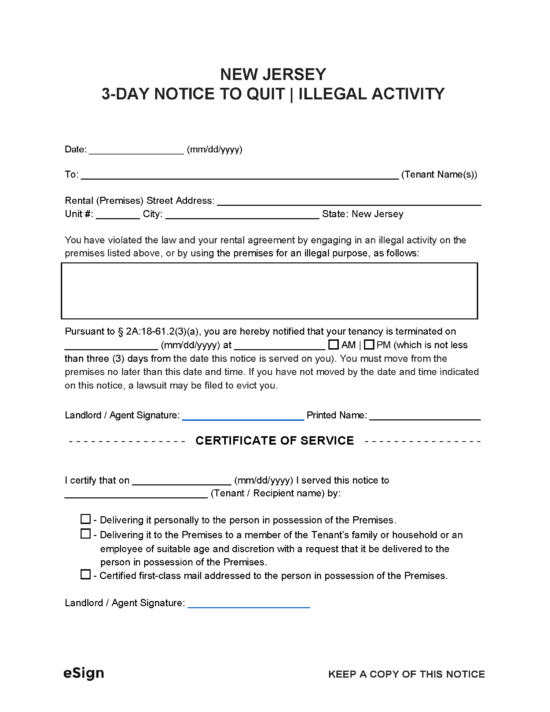 3-Day Notice to Quit | Illegal Activity – Terminates a tenant’s lease with three days’ notice for engaging in illegal activity on the premises. 3-Day Notice to Quit | Illegal Activity – Terminates a tenant’s lease with three days’ notice for engaging in illegal activity on the premises.
Download: PDF, Word (.docx), OpenDocument |
Notice Requirements
How to Evict a Tenant in New Jersey
Step 1 – Notice to Cease
If the tenant breaks the terms of their lease, frequently pays rent late, or causes a disturbance to neighbors, the landlord must serve them with a Notice to Cease before terminating their rental agreement.
The notice orders the tenant to stop their non-compliance and, in certain cases, gives them a time limit to fix their violation.
A Notice to Cease is not required in the following situations:
- Terminating a month-to-month rental agreement
- Non-payment of rent (for a first offense)
- Damage to property
- Illegal activity
Step 2 – Complete and Serve Notice to Quit
If a tenant does not stop their non-compliance, or in instances where such notice is not required, the landlord can serve them with a Notice to Quit.
- Immediate Notice to Quit for Non-Payment
- 1-Month Notice to Quit for Non-Compliance
- 3-Day Notice to Quit for Disorderly Conduct
- 1-Month Notice to Terminate Month-to-Month Tenancy
- 3-Day Notice to Quit for Property Damage
- 3-Day Notice to Quit for Illegal Activity
The landlord must deliver the notice by certified mail or personally serve it on the tenant (or family member who is over 14 years of age).
Step 3 – File Complaint and Summons
To begin legal action against a non-compliant tenant, the landlord will need to file a Verified Complaint and Summons with the clerk of the Special Civil Part Office in the county where the property is located.
The Verified Complaint and Summons must be accompanied by the following documents:
- Landlord Case Information Statement (LCIS)
- A copy of the lease
- Registration Statement
- Certification of Lease and Registration Statement
- Expired Notice to Quit and (if applicable) Notice to Cease – for cases other than non-payment
The clerk will charge the landlord a fee to file the documents and, after setting a hearing date, will arrange for the Complaint and Summons to be served on the tenant.
Step 4 – Attend Hearing
On the date of the hearing, the landlord must show up on time or the case may be dismissed. If the tenant doesn’t appear, a default judgment will likely be entered against them.
After considering the arguments and evidence presented by both parties, the judge will reach a verdict. A decision in the landlord’s favor will result in them being granted a Judgment for Possession to reclaim their property.
If the tenant wins, the case will be dismissed and they will be able to continue their lease.
Step 5 – Warrant for Possession
After receiving a judgment in their favor, the landlord can file a Request for Residential Warrant of Removal in case the tenant still won’t vacate.
The tenant has three days from the date that the Warrant of Removal is issued to vacate the premises. If the tenant does not leave the property within three days, the landlord can arrange for a court officer to forcibly remove the tenant.
Court Forms + Resources
Forms
- Request for Residential Warrant of Removal
- Signed by: Landlord
- Tenancy Summons and Return of Service (Appendix XI-B)
- Signed by: Clerk of the Superior Court
- Verified Complaint Landlord/Tenant (Appendix XI-X)
- Signed by: Landlord
- Warrant of Removal – Notice to Tenants – Appendix XI-G (3)
- Signed by: Clerk of the Superior Court
- Warrant of Removal – Execution – Appendix XI-G (4)
- Signed by: Special Civil Part Officer
Resources
